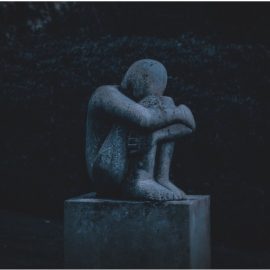

This article is an excerpt from the Shortform book guide to "Exploring the World of Lucid Dreaming" by Stephen LaBerge and Howard Rheingold. Shortform has the world's best summaries and analyses of books you should be reading.
Like this article? Sign up for a free trial here.
What is reality-checking in lucid dreaming? What kinds of reality checks can you perform?
If you’re learning how to lucid dream, you should start habitually reality-checking. By intermittently checking whether you’re sleeping or dreaming throughout the day, the thought will eventually translate to your dreams.
Here’s how to perform a reality check.
Reality-Checking
One way to realize that you’re dreaming is to ask yourself whether you’re dreaming or awake during a dream. When you ask this question and can answer it correctly, you’ll become lucid. We’ll call this method reality-checking for lucid dreaming.
To get yourself to reality-check in dreams, you must habitually ask yourself the same question while you’re awake. The authors say the patterns of our daytime thoughts, behaviors, and responses carry over into our dreams. Therefore, if you’re in the habit of reality-checking while awake, you’ll likely begin to ask yourself the same question while dreaming.
(Shortform note: Dream researchers and experts agree with the idea that the patterns in your thoughts and behaviors during the day translate into the content of your dreams, calling it the continuity hypothesis. The continuity hypothesis proposes that dreams aren’t random but rather reflect our waking lives. The previously dominant Freudian dream theory focused solely on repressed desires and hidden symbolism, and the continuity hypothesis marked a modern shift in how people understand dreams because it emphasizes the influence of waking life on dream life.)
To reality-check successfully, follow these recommendations from the authors:
- Ask yourself, “Am I dreaming or awake?” five to ten times a day. Don’t just automatically answer with, “Of course, I’m awake.” Instead, really try to determine what the answer is based on the evidence around you. If you answer automatically that you’re awake, you’ll likely answer the same way in dreams.
- Reality-check during times in your day that seem dreamlike—moments or events that feel surprising, unlikely, or strange, or when you’re having strong emotions. These types of things happen all the time in dreams, so if you’re in the habit of reality-checking when they happen while awake, you’ll increase the likelihood that they trigger reality-checking in dreams.
(Shortform note: Some lucid dream experts recommend you go one step beyond reality checking during surprising, unlikely, or strange events in your day—they say you should reality check using impossible events. To do this, you’ll still ask yourself if you’re dreaming, as the authors recommend, and then choose an action to perform that’s impossible to do in waking life. For example, try to push your finger through the palm of your other hand or keep breathing with your mouth closed and nose pinched. When you can do the impossible task, you’ll know you’re dreaming. Similar to the authors, they recommend you incorporate these checks into your daily routines to build the habit of reality-checking in your dreams.)

———End of Preview———
Like what you just read? Read the rest of the world's best book summary and analysis of Stephen LaBerge and Howard Rheingold's "Exploring the World of Lucid Dreaming" at Shortform.
Here's what you'll find in our full Exploring the World of Lucid Dreaming summary:
- Ways to prepare for lucid dreaming
- How to purposefully “wake up” in your dreams
- The many ways lucid dreaming can improve your waking life






